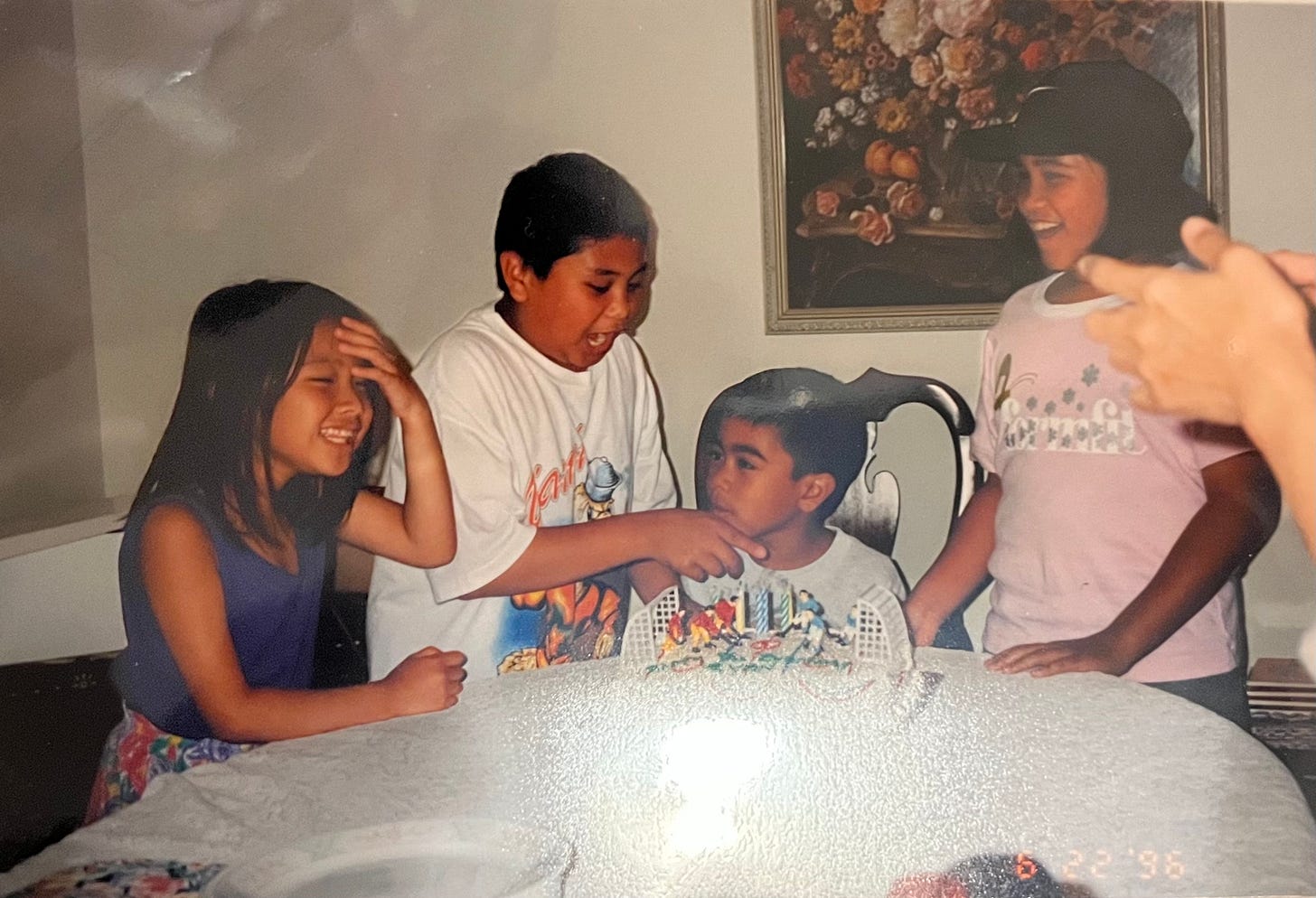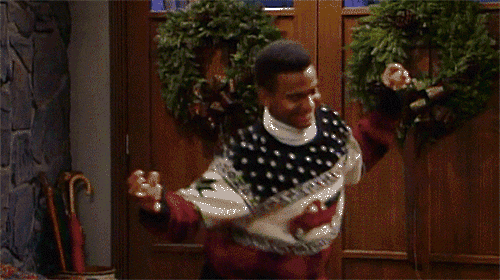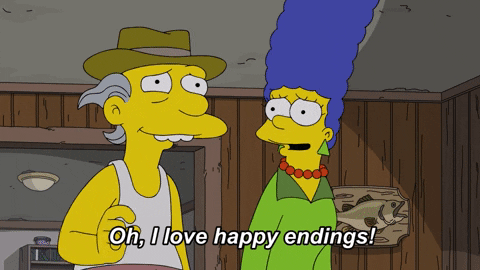Sprinkling Some Holiday Cheer with Radical Care Over Hyper-Consumerism
Mutual aid as a pathway for more equitable futures
Hi friends,
Happy December! It’s the most wonderful time of the year, isn’t it?!
Or so they say…
If you’re anything like me, the holiday season is fraught with mixed emotions. I love the festive spirit twinkling on every corner as everyone puts up their best decor. I revel in the simple fun of cheesy holiday movies and specials. And I lather myself in the glee of planning parties with family and friends, especially this year when we have been far apart for so long!
But then, of course, waiting at the end (or is it laced into every step?) of all of these celebrations is the soul-crushing feeling of existing in a world that is so deeply wrapped up in consumerism.
As soon as November 1st rolls around, I can feel the energy draining out of me as every shop I enter reminds me of the gifts I should be buying, as every ad I come across online forces a Black Friday sale down my throat.
This year feels especially complex as we continue to grapple with the economic effects of the pandemic – from the ”Great Resignation” to the involuntary loss of jobs and livelihoods, from rising inflation to the global supply chain disruptions.
But I have to admit, I welcome this news as good news!
Our world continues to be turned upside down and that, truthfully, has been a large part of my holiday cheer this year as I entertain merry thoughts of the collapse of capitalism and the demise of our hyper-consumerist mentality.
As we wrap up yet another year, I want to offer a little glimmer of inspiration for the future. I want to focus on the possibility – no, the reality! – of a world that focuses on radical care over cheap consumerism. Not just during the holidays, but all year round.
Consider this the “R” of our 3DR approach to equity and anti-oppression: Rebuild!
Radical care through mutual aid:
At the beginning of this pandemic during the height of the chaos and uncertainty, I vividly remember friends and acquaintances mobilizing to create informal networks of care in their communities to provide masks and other protective gear with one another. My neighbours and I used our Facebook group to pick up and deliver groceries for the elderly in our building.
My local bookshop, Glad Day (the world’s oldest LGBTQ+ bookshop!), began an “Emergency Survival Fund” to support LGBTQ2S artists, performers, and other tip-based workers during this critical time when the government had not yet figured out how to support its citizens who were being laid off en masse and whose rent payments were looming. Glad Day continued to collect and disburse donations for their community and raised $300,000 as of September 2020. Throughout this time, they’ve sent 900+ emergency grants to LGBTQ2S people in need and 1500+ payments to artists and performers for their work.
As the pandemic raged on and exacerbated existing issues like the lack of affordable housing and the flawed and inadequate shelter system in Toronto, I watched my local park become a large encampment for the many people experiencing homelessness in this city. I got involved with organizations like the Encampment Support Network who mobilized to collect and distribute donations of water, snacks, clothes, naloxone kits, and tents, while also advocating and protesting against violent evictions at the hands of city authorities and police.
While I went on my daily walks trying to keep sane during this trying year, I started to notice community fridges pop up in different parts across the city. These fridges provide 24/7 access to food, helping to aid community members who are facing food insecurity. “Take what you need, leave what you can,” as the artwork on all of these fridges say.
These acts of kindness, of generosity, of community building, and of political mobilizing are all examples of “mutual aid”. Put very simply, mutual aid is a voluntary reciprocal exchange of resources and services for mutual benefit.
Put more elaborately by Andrea Arnold on the Cut:
“In mutual-aid systems, people work cooperatively to meet the needs of everyone in the community. It’s different from charity, which features a one-way relationship between an organization and recipients, and often responds to the effects of inequality but not its causes. Mutual aid is an act of solidarity that builds sustained networks between neighbors.”
I’ve seen so much more of this grassroots community organizing emerge over the last year. These efforts by everyday citizens have made me feel connected to my community, my neighbourhood, and my city during a time of extreme isolation. And it has shown me the powerful ways in which we, each and every single one of us, are capable of tangibly building more equitable systems in this very moment. In the face of government failures to provide for some of our most vulnerable populations, we are filling these gaps ourselves and proving that caring and sharing at the most basic level is the most radical act of all.
Have you seen or been involved in any mutual aid projects within your community? Tell me more about it! I’m curious to see how your community has mobilized over the last year or so.
This is nothing new! Mutual aid across space and time:
To be perfectly honest, this term “mutual aid” is one that I have only become acquainted with over the last year or so. It has really only entered the mainstream consciousness and lexicon during this time of crisis. But the truth is that mutual aid has always existed for those of us in marginalized communities. We may just not use those exact words.
Growing up in a Filipino household, mutual aid was just a part of our life. When my family and I first moved to Canada, we lived in an apartment building in Scarborough where we connected with the other Filipino residents who instantly became our family. My parents and my new Titas and Titos (aunts and uncles) created informal circles and systems of caregiving for all of us kids – many of whom I am still connected with and who I affectionately call my pinsans/cousins without any blood relation. The Titas and Titos would take turns picking up all the cousins from school while the more elderly residents, our Lolas and Lolos (grandmas and grandpas), would babysit during PA Days or other holidays when our parents had to work.

Black communities too know the importance of mutual aid all too well. Vicky Mochama’s essay in The Walrus, Black Communities Have Known about Mutual Aid All Along, is a thorough and heartening look at all the ways Black communities have organized amongst themselves and across the diaspora. She writes of “money pools,” known by various names in different places – sol in Haiti, susu in Ghana, box hand in Guyana, jama in Kenya, hagbad in Somalia – where individuals put in small amounts of money and take turns receiving the larger pot of collective money. It’s an alternative system of investment within communities that have historically been excluded from formal financial institutions and that were built to serve primarily white communities.
This Visual History of Mutual Aid by Ariel Aberg-Riger is a beautiful overview of the multitude of ways in which marginalized communities across racial and ethnic backgrounds have come together in history to support and uplift one another, once again in the face of government failures and outright systemic discrimination.

So while the phrasing of “mutual aid” has become fashionable over the last year, it isn’t new at all. Marginalized communities have always been at the forefront of creating new systems!
Get inspired, but let’s keep it real.
I loved seeing all of this organizing and community building emerge throughout the pandemic and I loved getting involved in some of them myself. I felt connected and I felt powerful to be working within a collective and actually seeing the tangible difference we were all making in each other’s lives. But while it’s easy to get wrapped up in the inspiration of our own collective power, it’s important not to lose sight of the larger structures at play.
One of my favourite writers, Jia Tolentino, articulated it perfectly:
“There’s a certain kind of news story that is presented as heartwarming but actually evinces the ravages of American inequality under capitalism: the account of an eighth grader who raised money to eliminate his classmates’ lunch debt, or the report on a FedEx employee who walked twelve miles to and from work each day until her co-workers took up a collection to buy her a car. We can be so moved by the way people come together to overcome hardship that we lose sight of the fact that many of these hardships should not exist at all.”
We love a heartwarming feel-good story and many of these mutual aid projects can easily be simplified. But mutual aid is anything but simple. It is radical and it is revolutionary. It is a glimpse into the future, and it is one that we are creating ourselves without waiting for anyone to tell us whether we can or can’t.
As trans activist Dean Spade puts it, “Mutual aid projects are a form of political participation in which people take responsibility for caring for one another and changing political conditions. Not through symbolic acts or putting pressure on representatives, but by actually building new social relations that are more survivable.”
Another year will soon be done and dusted. As we welcome 2022, I hope we continue to take the lessons we’ve learned during this chaotic time and embrace our very real power to rebuild our world and create a more equitable future for each and every one of us.
I sincerely hope this newsletter lifted your spirits during this festive time, and that you learned something valuable! Hit the reply button to let me know what you think and/or hit the button below to share it with a friend.
Until next time, happy holidays!
Get that rest. Eat to your heart’s content. And give your loved ones an extra squeeze over the next few weeks.
In solidarity,
Justine
Additional resources on mutual aid:
Read Jia Tolentino’s article in the New Yorker on “What Mutual Aid Can Do During A Pandemic”.
I loved reading about these examples of mutual aid networks across history in Bloomberg’s visual history.
I recently finished reading Disability Visibility, a collection of essays written by disability activists. Almost each and every single story is a testament to the systems of care that people of various disabilities have created to survive and thrive in this world that was exclusively built for able-bodied people. It is a must-read!
Read “Grassroots Online Efforts Are Forming A New Queer Network of Care” on The Verge.
What’s happening in my world:
If you are doing some shopping this holiday season, I encourage you to shop local and support small businesses. If you’re based in Canada, Not Amazon is a great resource to find small businesses that are women, BIPOC and LQBTQ2S+ owned in various cities.
I will also humbly offer my own business and community, Living Hyphen, as an option that I ask you support! Living Hyphen explores what it means to live in between cultures. Among many other things, we publish a magazine that amplifies the stories of writers and artists from all across what we now know as “Canada” and who hail from 70+ ethnic backgrounds, religions, and Indigenous nations combined. We have some generous offers on gift bundles in our shop this season! Shop at www.livinghyphen.ca.
I’m facilitating a virtual anti-racism writing course in February called Distances Within & Between Us through Living Hyphen. This four-week course aims to be a brave and reflective space where we can turn inwards to decolonize our minds, while also working towards actively disrupting systems of oppression. We’ll examine the complexities of our identities and how that impacts how we move through the world through writing prompts, storytelling exercises, and critical but caring conversations. I’d love for you to join me. Use the promo code 3DR for 15% off. Learn more and register here.








